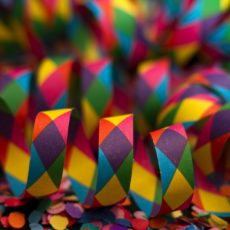
Recycling for us humans may have started in the 1970’s but for mother nature it’s a tale as old as time. Nature is a master recycler. Entire ecosystems rely on successfully reusing resources to keep thriving. Nature is filled with endless loops of energy.
For example the carbon cycle: Trees take sunlight, water, and CO2 and turn it into oxygen and carbohydrates. An animal, eats the carbohydrate filled leaves, and uses it for energy and expels the waste. When an animal dies, tiny microorganisms break that waste down. And then the carbon gets released back into the environment, starting the cycle again.

So many species have a niche in a recycling cycle. Fungi are the biggest recyclers of the natural world. White Rot Fungus, for instance breaks down the tough cell walls of trees and use those nutrients for fuel. One tree’s trash is another fungi’s treasure. And some fungi make a good meal. We tend to use a lot of White Rot Fungus in our food. Take the popular Shiitake Mushroom, a classic White Rot Fungus that feeds off hardwood trees like maple, breech, or poplar. Fungi and other decomposers like some bacteria are the biggest recyclers in nature. These organisms are responsible for most of the breakdown of decaying matter.
Another critter that lives off of leftovers is in the infamous dung beetle. These bugs eat and live in the droppings of other animals, mostly burrowing owls. While the most famous species, Scarabaeus sacer, was worshiped in Ancient Egypt, dung beetles can be found on every continent except Antarctica.

While some animals live off the waste of others, others reuse in resourceful ways. Hermit crabs are the most known species for literally living for the trash of others animals. They snatch the abandoned shell of a sea snail. Their specially evolved abdomens allows them to latch on to the inside of the shell and use it as a mobile home. And like humans, they’ve even been known to recycle a tin can.
Octopuses recycle shells too. Coconut octopi have been spotted using clam shells as protection and camouflage. If a shell isn’t around sometimes they will use a stray coconut. The use of such objects suggests a high level of intelligence usually reserved for humans. Thank goodness they don’t have opposable thumbs, although they can open jars and solve puzzles.
Other animals recycle not to eat or live in but for pure decoration! The bowerbird native to Australia are known for their elaborate courtship displays. These artistic avians use rocks and glittery objects to attract mates. Most of the time it’s natural objects like twigs and rocks, but sometimes only man-made will do. They’ve been spotted using plastic rings, paper money, and other litter. But no matter what the use, it’s gotta be blue!
Although humans aren’t as good as nature is at recycling, we are getting better. According to the EPA only around 33% of US trash gets recycled out of 75% that could be recycled every year. And many U.S. cities are stopping recycling all together due to rising costs. So maybe we should take a cue from nature and use natural products made from compostable or easily recycled materials.




